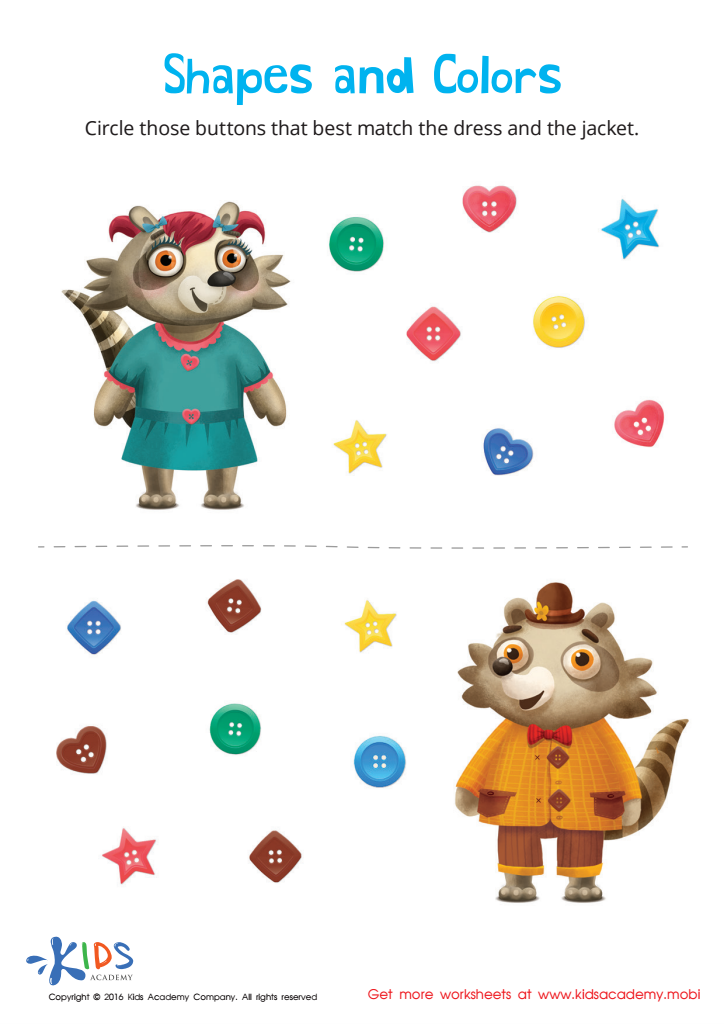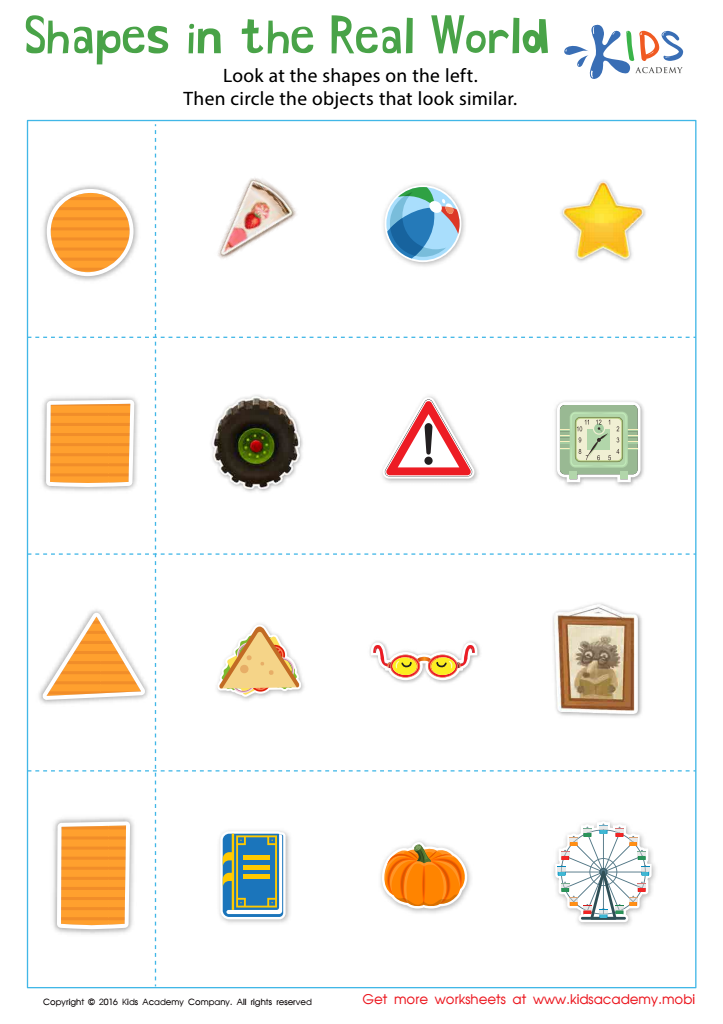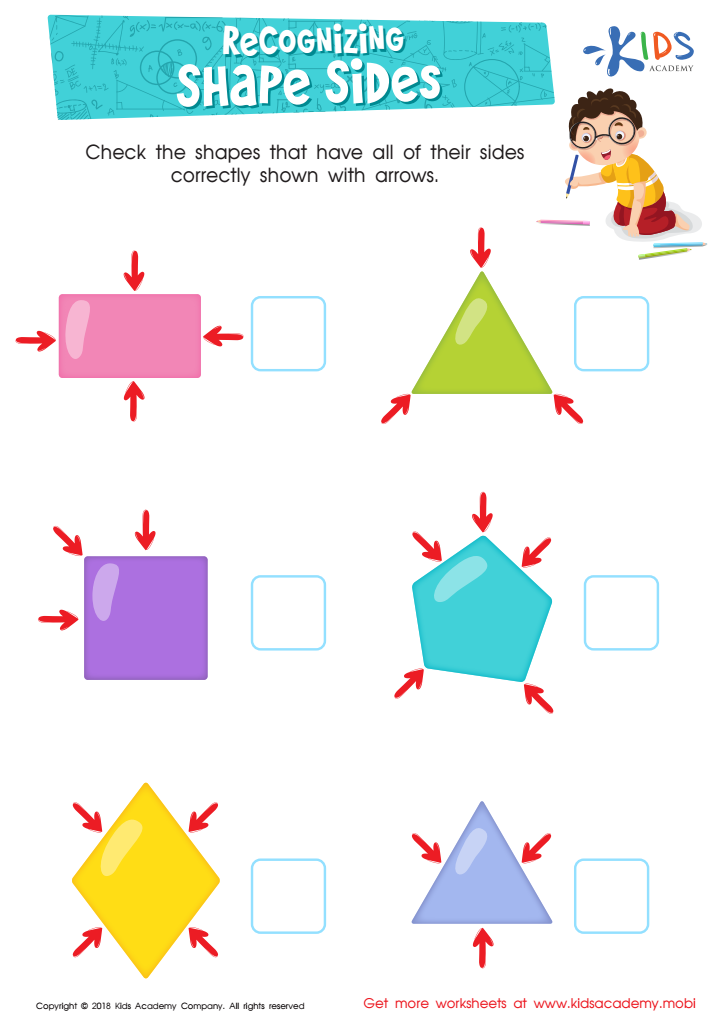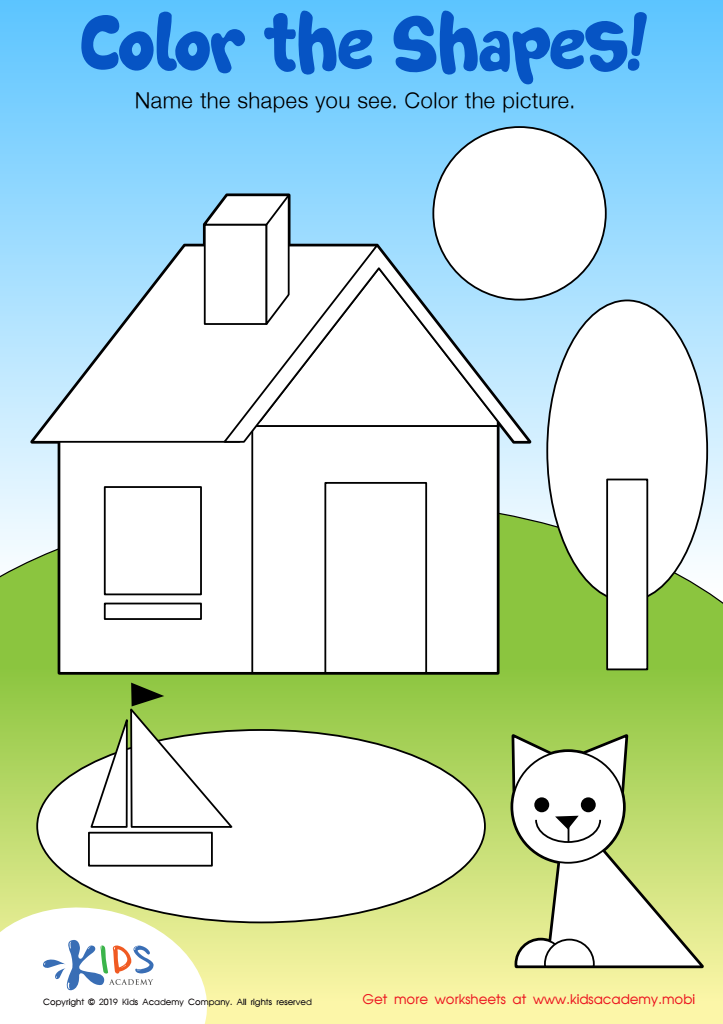Color Identification Geometry Worksheets for Ages 6-8
4 filtered results
-
From - To
Discover our engaging Color Identification Geometry Worksheets designed specifically for children aged 6-8! These worksheets merge geometric concepts with colorful visuals, making learning fun and interactive. As your child explores shapes, they will enhance their color recognition skills, helping to develop both critical thinking and fine motor skills. Our activities promote hands-on learning with vibrant illustrations that captivate young minds. Ideal for classroom or home use, these activities support foundational math skills in a playful way. Give your child the tools to succeed in geometry while boosting their creativity and expression through colors! Download now and spark their interest in learning!


Matching: Shapes and Colors Worksheet


Shapes in the Real World Worksheet


Recognizing Shape Sides Worksheet


Color the Shapes Worksheet
Color identification and geometry are foundational concepts in early childhood education, particularly for children aged 6-8. At this stage, children are naturally curious and eager to explore the world around them. Learning to identify colors enhances their ability to categorize and differentiate objects, which is essential for cognitive development. It sharpens their observation skills and enriches vocabulary, as they learn specific terms like "red," "blue," "triangle," and "circle."
Incorporating geometry along with color identification fosters critical thinking and problem-solving skills. For instance, recognizing colors in various shapes helps children understand spatial relationships, symmetry, and patterns. These concepts not only lay the groundwork for mathematics but also foster creativity and imagination as children can express themselves artistically.
Moreover, engaging with colors and geometric shapes complements various learning styles, supporting those who thrive in visual or tactile environments. Parents and teachers should care about this area of learning, as it promotes lifelong skills that influence academic success, shape emotional development, and encourage a love for learning. By emphasizing color identification and geometry, we empower our children to navigate and interpret their surroundings confidently, setting the stage for future learning experiences.
 Assign to My Students
Assign to My Students



























